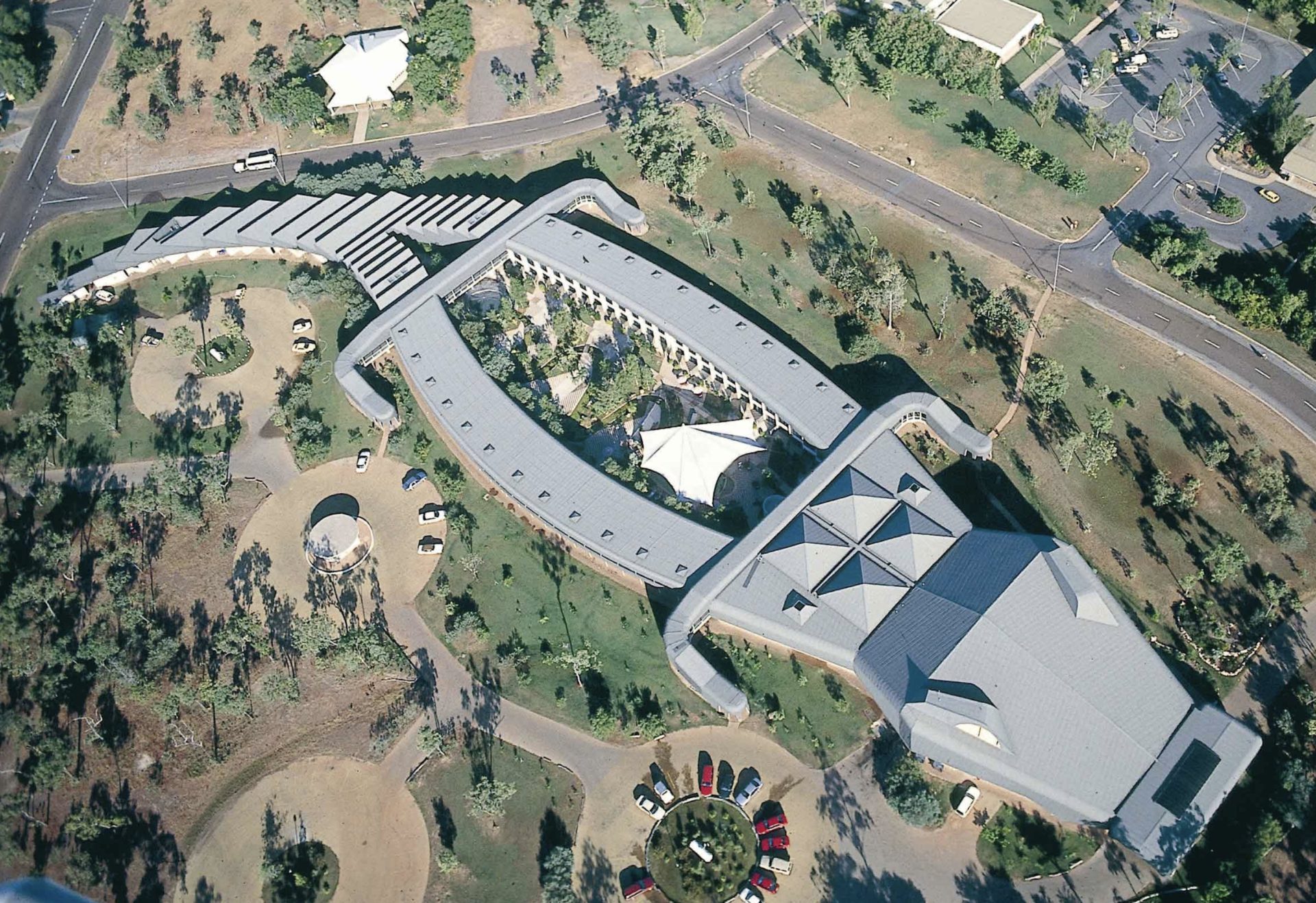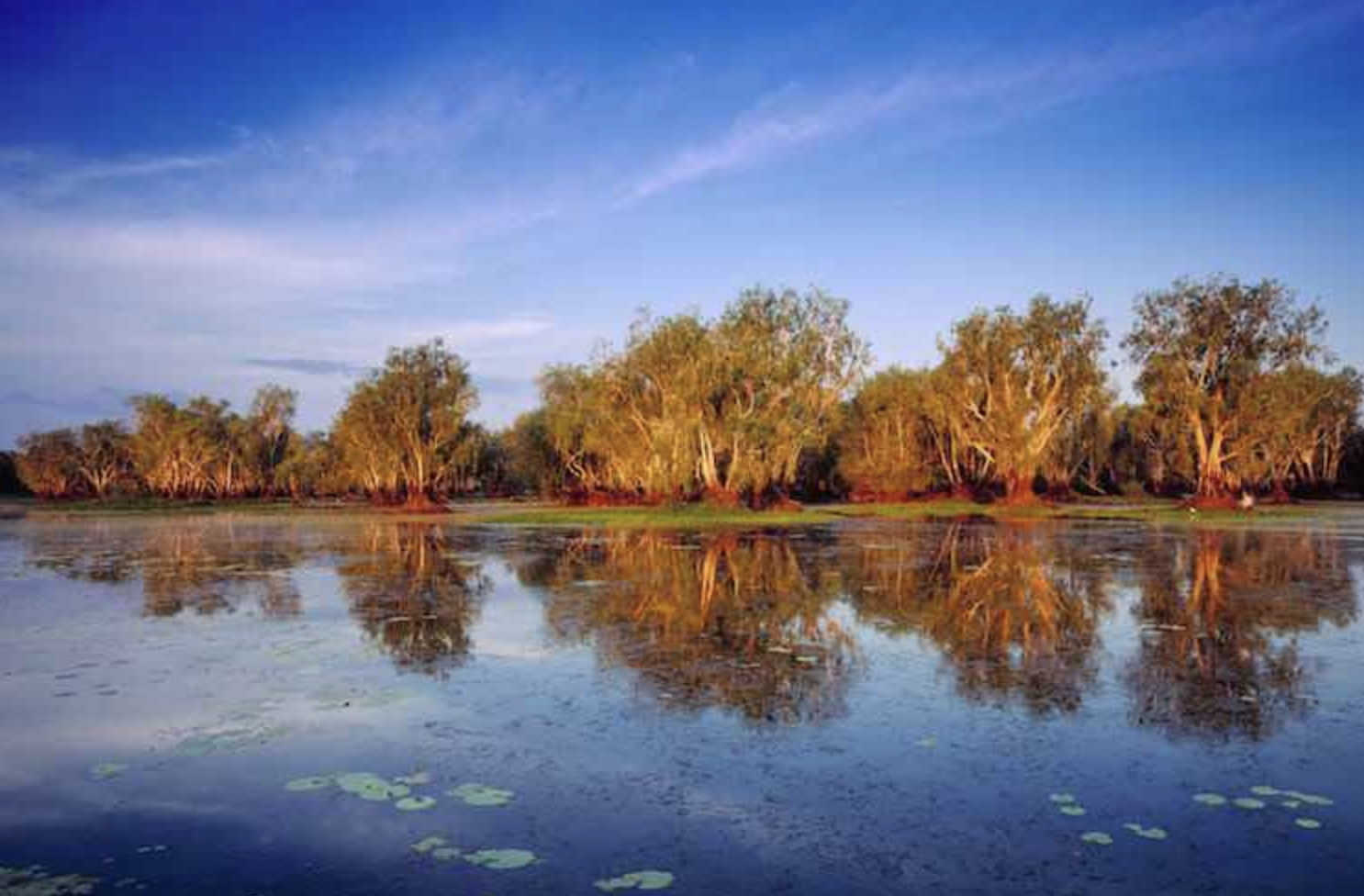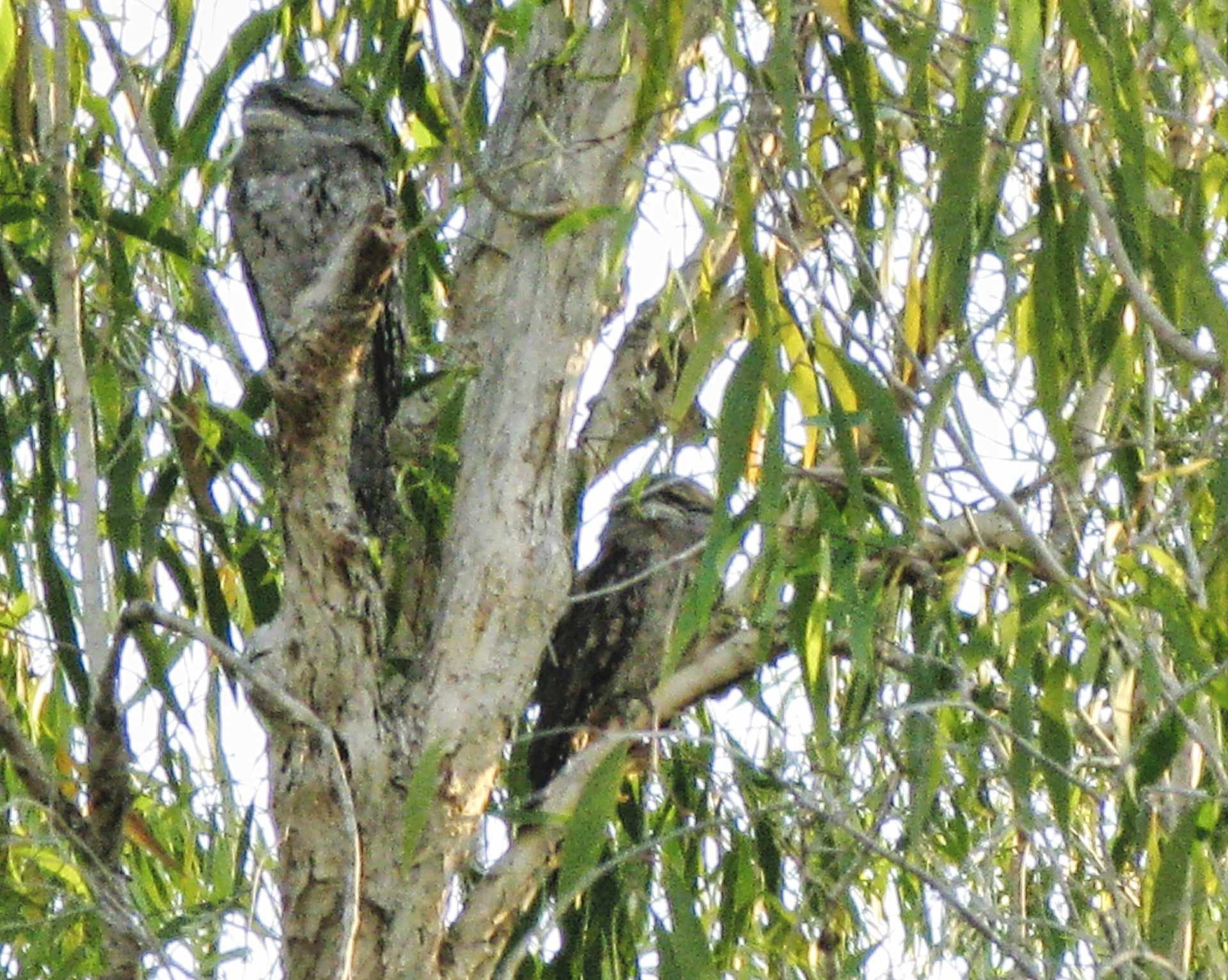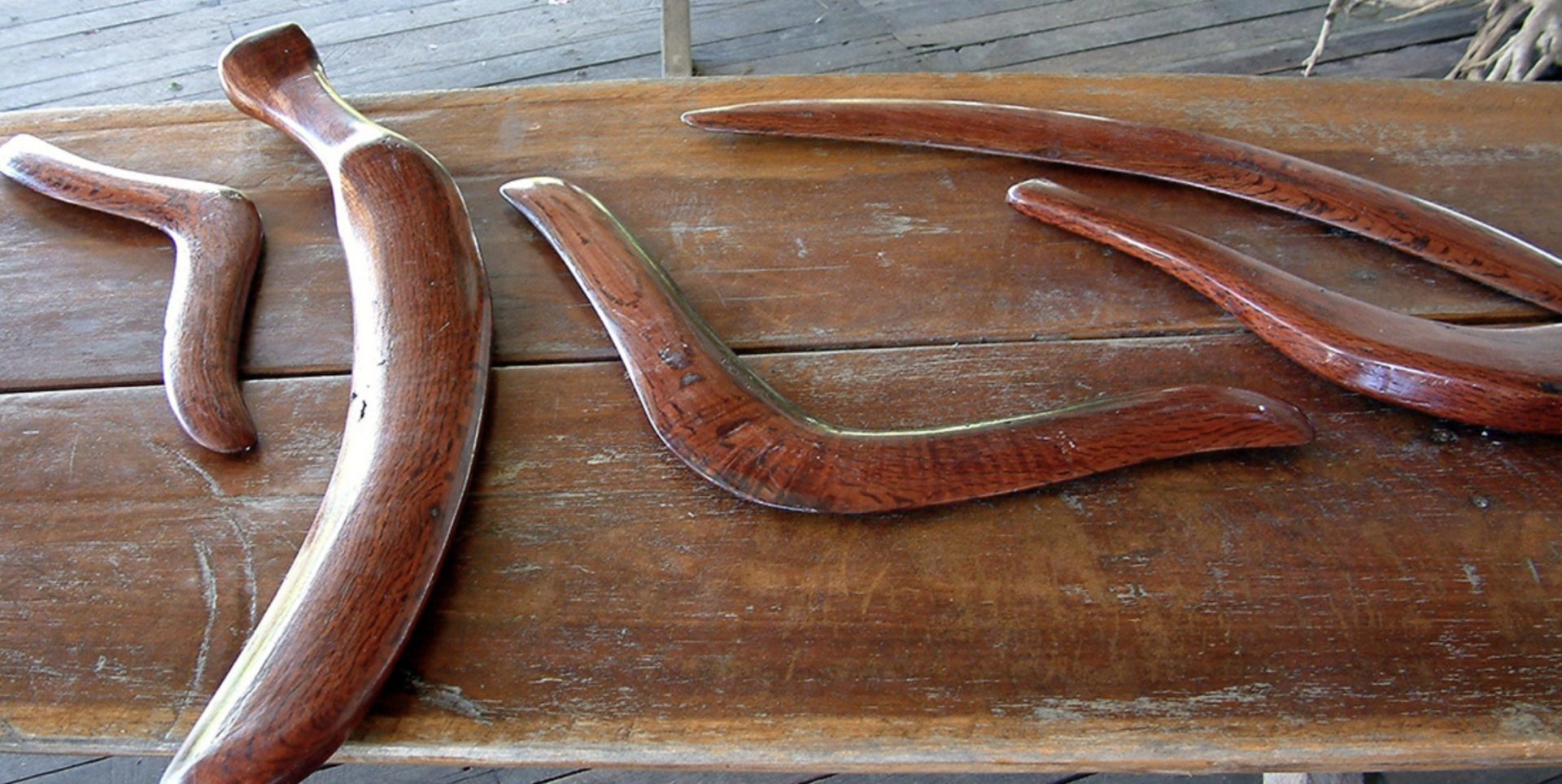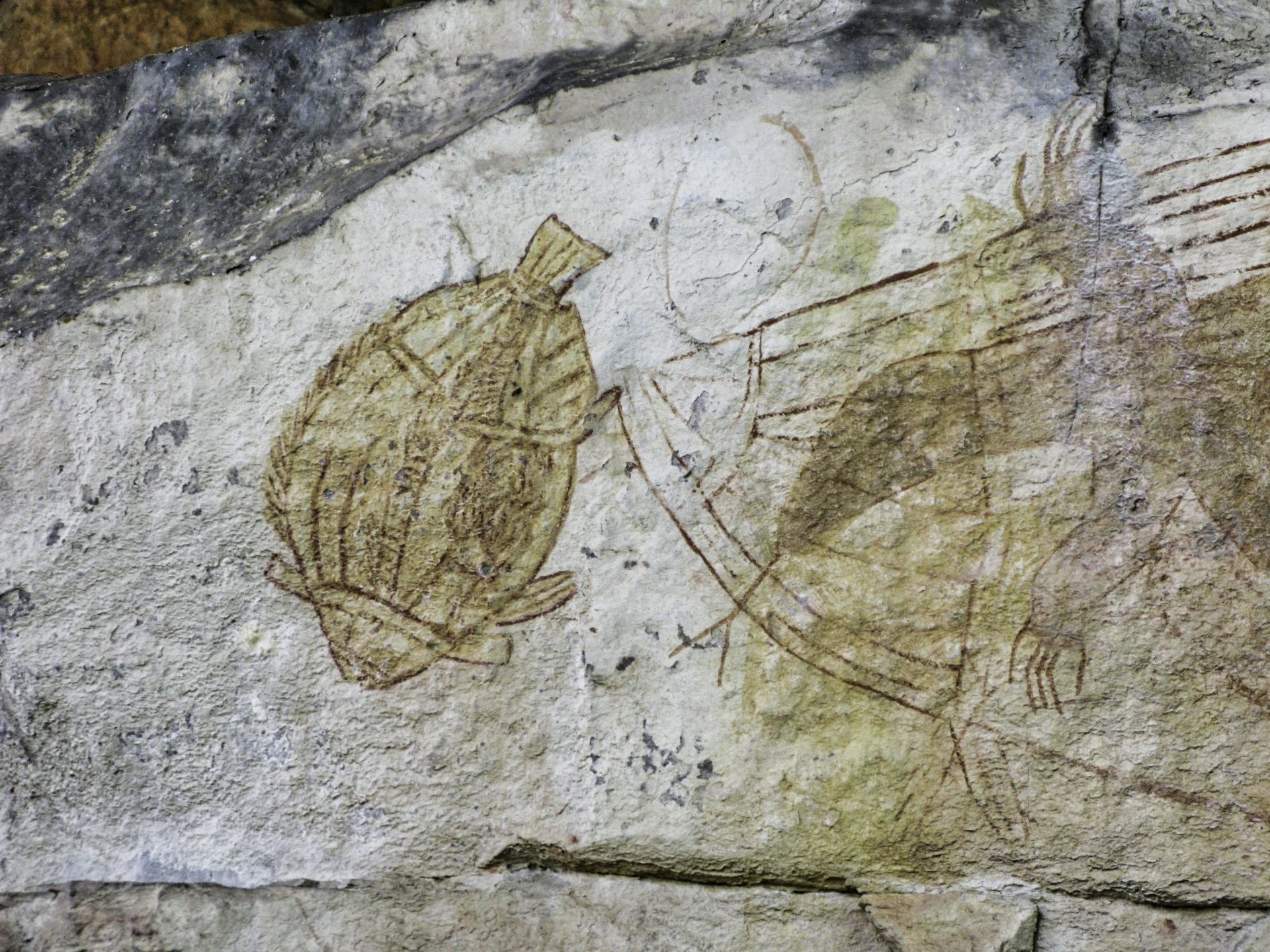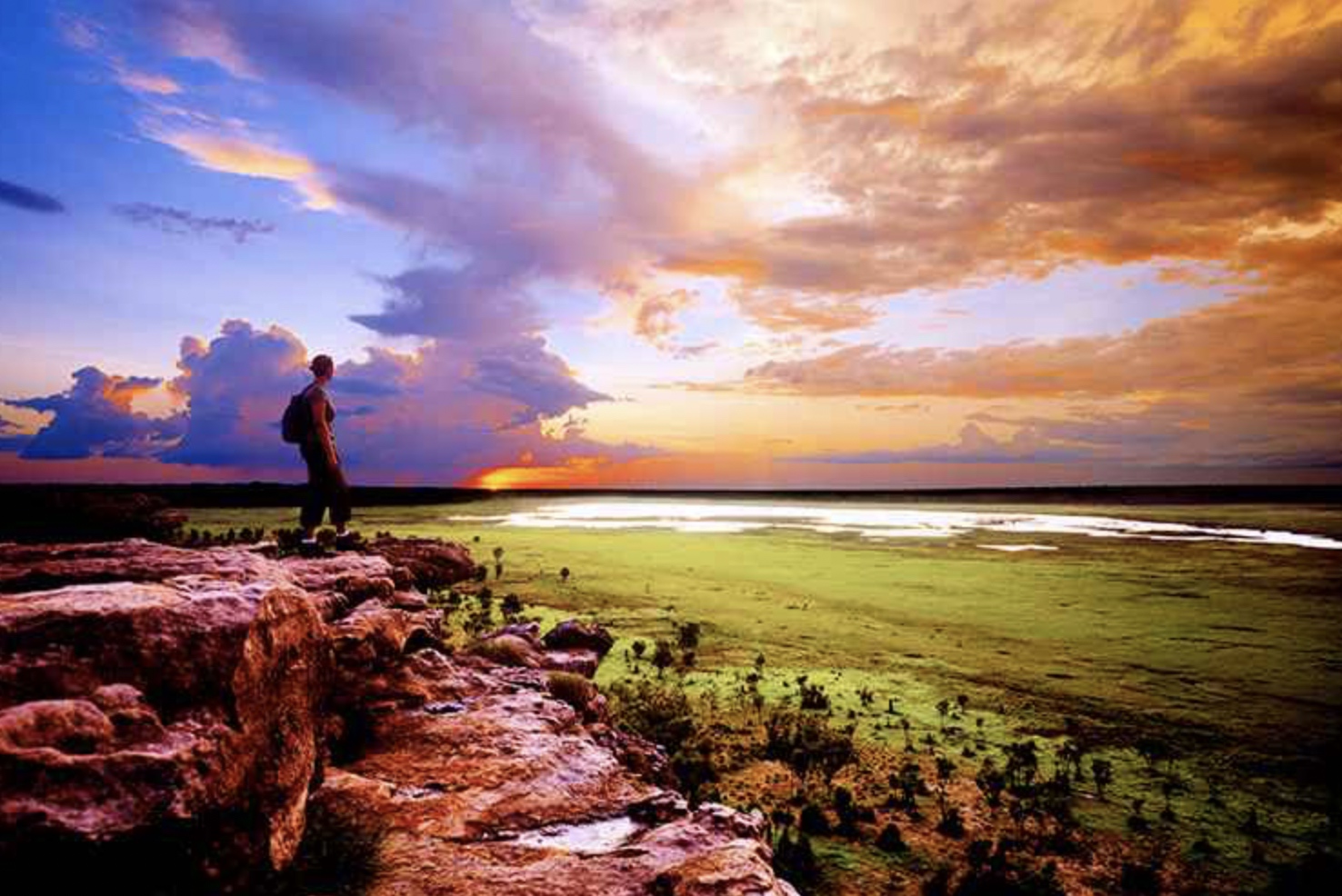From Katherine, we actually took a bus the short distance to Cooinda, the gateway to Kakadu National Park. Once again, we were pleased to see mostly Aboriginal people working in the hotels and tourist concessions. In fact, they managed the property where we stayed — the Gagudju Crocodile Holiday Inn. And yes, it’s actually laid out in the shape of a huge crocodile! Kakadu is Australia’s largest national park with a very diverse landscape of rainforests, giant waterfalls, escarpments, and rock art dating back up to 20,000 years from the Bininj/Mungguy people. But it’s also a place to learn about Aboriginal culture and how people have lived in the six dramatically different seasons here. On our first evening here, we went out and did a Yellow Water Cruise, traveling through the Yellow Water Billabong (an isolated pond that is formed when the path of a river changes, leaving the former branch with a dead end). About one third of Australia’s bird species are represented in Kakadu National Park, with at least 60 species found in the wetlands. Whistling Ducks and Magpie Geese are the most abundant. Of course, there are plenty of crocodiles that kept us company. Given that it was a sunset cruise, the waters and surrounding scenery were just gorgeous.
The next day we were off for a bit of exercise. We started out with a cultural tour with an Aboriginal guide who gave us a lot of insight into the creation story and the ancestors who lived and passed through this area tens of thousands of years ago. We also learned about the local landforms, plants, and animals and how the local peoples used them. We got to try both a hunting sling and a hunting boomerang, which looks quite different than the ones you may be familiar with. Hunting boomerangs are straighter and aren’t designed to return. Why you might ask… it’s because this area is heavily forested with gum trees, making a returning impossible, but still deadly in a hunt. On the other side, we also learned about the “Stolen Generation,” which refers to the countless number of Aboriginal and Torres Strait Islander children who were forcibly removed from their families through government policy to live and be schooled in White Society, all the way through the 1970s. It is a long and painful story, rife with physical, cultural, and sexual abuse. Many families experienced inter-generational trauma, through the experiences of not only those that were removed, but also their parents and grandparents. This, of course, led to chronic alcoholism that has been endemic to the Aborigines ever since. The great news is that in places like Katherine and Kakadu, effective tribal leadership has really started turning this around. In Kakadu, their community center only opens their bar for 2 hours one day a week. It has really had a positive impact. From there, we were off to do the Ubirr walk, a must see in Kakadu. Here are a number of escarpments that have provided shelter for people over the millennia who also used the plants and animals of the nearby East Alligator river for food, tools, and medicine. Within these escarpments is a myriad of rock art that is tens of thousands of years old. A lot of the figures include various food animals, but also a Tasmanian tiger that has been extinct for a long time. From there we hiked up to the lookout. While this is only about a half mile hike, it climbs over 700 feet in that length. Per guide, Louise, I was put in charge of making sure that our elderly hikers didn’t go over the edge (of course she told me this after she jumped on my back for a piggy back ride along a sheer cliff!). I actually did have to grab our Burmese POW twice before he slipped over the edge (we earned our discount!). This lookout is stunning, however — looking out over the Nadab floodplain, woodlands, and rainforests below you. If you want to see this for yourself, they filmed this view in the original “Crocodile Dundee” movie. Just look for the great view and stirring symphonic music!



